The Outer Limits: Flight of Fear installations saw pretty similar top speeds to the old launching coasters, but reaching top speed in nearly half the time. Add the element of complete darkness, and the launch feels even more intense. The two coasters also paved the way for a new wave of launching roller coasters from many different manufacturers, including the first roller coaster to break the 100 MPH barrier. The technology is not only used to launch trains to high rates of speed, but it is also used to mimic chain-driven lift hills and slowly move trains through rooms like a dark ride.
The terms Linear Induction Motors (LIMs) and Linear Synchronous Motors (LSMs) are sometimes used interchangeably, but the technologies do vary. LIMs utilize electric "motors" that create opposing magnetic fields to propel a conductive or magnetic plate connected to the train. LSMs utilize very much the same type of electric "motors", but instead of creating opposing magnetic fields, the motors turn on and off as plates containing alternating pole magnets are propelled down the track. The trick with both technologies is to time the powering on or alternating current of the magnets at just the right time to actually move the train in the desired direction. The concept had been used for years on passenger trains, airport trams, and Disney's Peoplemover. However, until Premier figured it out, attempts to quickly accelerate objects using the technology was inconsistent and choppy. Sophisticated sensors and computer systems eventually solved the problems, and the limits of the technology merely became the amount of electricity parks were willing to consume, the tolerance of the human body, and designers' imagination.
For those that have experienced a LIMs or LSMs launch (especially before newer hydraulic or pneumatic launch systems), the feeling is like nothing you can get anywhere. With the technology employed in just about every major theme park in the United States and even more parks overseas, you don't have to go far to get your fix. The initial coaster designs were pretty uninspiring. The two Outer Limits coasters were identical, and two more clones were built as outdoor coasters at Six Flags America (Joker's Jinx) and Six Flags Fiesta Texas (Poltergeist), and many of the LIMs and LSMs launching coasters built in the late 90's were simple shuttle coasters like Mr. Freeze (Six Flags Over Texas and Six Flags St. Louis) and Batman and Robin: The Chiller (Six Flags Great Adventure).
In 1997, Six Flags Magic Mountain built the ultimate LSMs coaster with the debut of Superman: The Escape. With a 100 MPH top speed and a 400-foot tower, it held the world record for height and speed for almost 5 years, but operational costs (primarily electricity) and poor maintenance caused it to only run at half capacity, if it even ran it all, until it was revitalized in 2011.
In 1998, Paramount's Kings Dominion upped the ante with what is still one of the more unique launching roller coasters in the world with Volcano: The Blast Coaster. Built into what was an old shoot-the-chutes dark ride called The Haunted River, Volcano was the first inverted launching roller coaster, and at a top speed of 70 MPH, it is still the world's fastest complete circuit inverted roller coaster. The train is launched through a tunnel and speeds around a sweeping left turn before getting another blast of speed and up and out the top of the mountain. When the coaster debuted there were a number of problems accelerating the train fast enough to get it out of the mountain, and the solution was to run the coaster with just 8 seats per train instead of the designed 16, which caused immense lines in its first season. However, the problems were solved the following season, and it's never looked back. There is really still nothing like Volcano, and while the second half of the ride containing a series of slow barrel rolls is nothing special, the coaster is still a destination for any coaster junkie. If you can't experience the full-circuit of Volcano, Intamin created a number of inverted shuttle LIMs coasters that are found at a number of parks around the country, including V2 at Six Flags Discovery Kingdom.
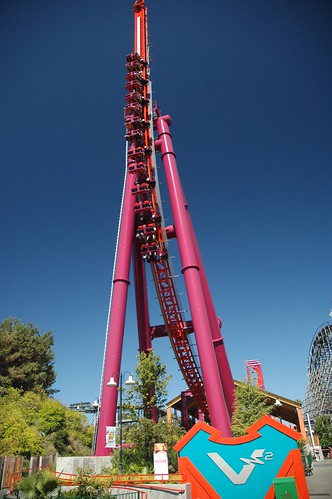
In 2007, Cedar Point showcased the versatility of LIMs and LSMs with the debut of Maverick. The coaster hides much of its technology, but it is quite possibly one of the most technologically advanced in the world. Maverick is marketed for is beyond vertical first drop, but the LIMs/LSMs make it one of the most unique sit down coasters in the country. The circuit starts with a slow crawl up a "lift" hill that is actually a series of LSMs that power the train up the incline much like a traditional chain lift. After a series of ground hugging turns and inversions, the train comes to a stop in a tunnel directly beneath the station. A set of LIMs then launches the train to 70 MPH and through a series of high speed maneuvers, one that was so extreme that it had to be removed because it exceeded human tolerance.
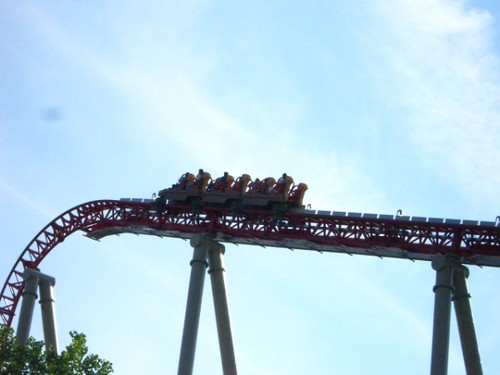
However, not all LIMs and LSMs coasters are speed machines. In fact, many park operators are incorporating the technology into more family friendly rides. Revenge of the Mummy (Universal Studios Orlando and Hollywood) actually uses the technology to slowly propel trains through the first half of the ride that is very much like a traditional dark ride, and then launches the train up a hill and into a traditional roller coaster course. Back Lot Stunt Coasters (formerly themed around "The Italian Job" at Canada's Wonderland, Kings Dominion and Kings Island) use LIMs for less intense launches to a maximum speed of 40 MPH, while Cheetah Hunt uses three different sets of LSMs to not only launch the train up a 100-foot tower, but to give it an extra shot of speed through terrain-hugging curves up to 60 MPH.
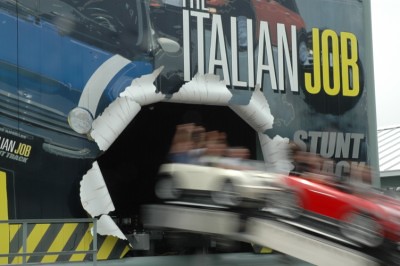
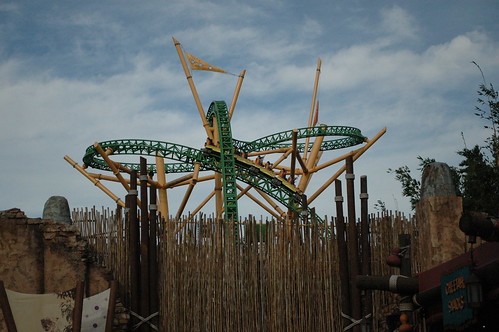
Two of the newest coasters in the US, Manta at Sea World San Diego, and Verbolten at Busch Gardens Williamsburg demonstrate that the speed-harnessing technology of LIMs/LSMs can be incorporated with other technologies to create more immersive attractions that are far more than just G-forces and inversions. In 2013, Six Flags Magic Mountain will again tap the technology in Full Throttle in the first complete circuit coaster to feature a forwards and backwards launch.
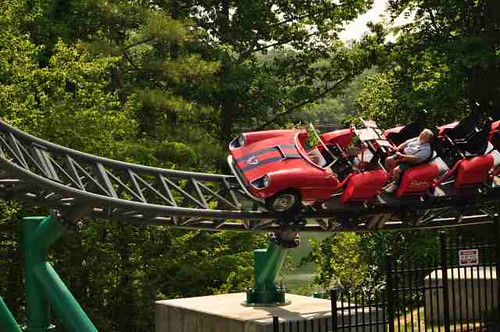
In 17 years, LIMs/LSMs have completely changed the landscape of the theme park industry. They're featured on some of the fastest, most intense, and most unique roller coasters on the planet. The systems can be a little pricey to operate, but the results are unmatched, and parks may just now be figuring out how to really utilize the technology.
Tweet
Instead of using the current catapults to launch jets off of the flight deck, these Linear systems would have much less maintenance and down time.
This article has been archived and is no longer accepting comments.